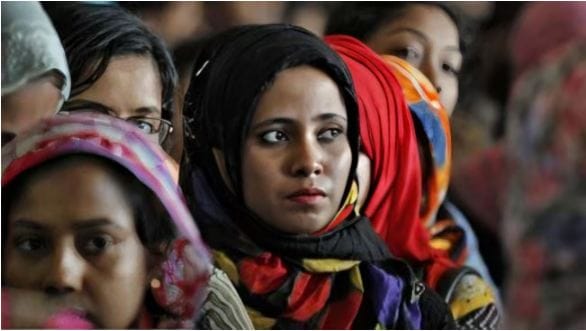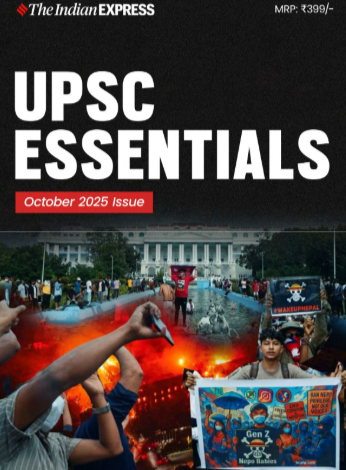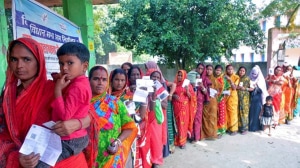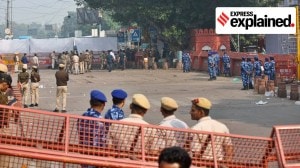Manas Srivastava leads the UPSC Essentials section of The Indian Express (digital). He majorly writes on UPSC, other competitive exams and education-related projects. In the past, Manas has represented India at the G-20 Youth Summit in Mexico. He is a former member of the Youth Council, GOI. A two-time topper/gold medallist in History (both in graduation and post-graduation) from Delhi University, he has mentored and taught UPSC aspirants for more than five years. His diverse role in The Indian Express consists of writing, editing, anchoring/ hosting, interviewing experts, and curating and simplifying news for the benefit of students. He hosts the YouTube talk show called ‘Art and Culture with Devdutt Pattanaik’ and a LIVE series on Instagram and YouTube called ‘LIVE with Manas’.His talks on ‘How to read a newspaper’ focus on newspaper reading as an essential habit for students. His articles and videos aim at finding solutions to the general queries of students and hence he believes in being students' editor, preparing them not just for any exam but helping them to become informed citizens. This is where he makes his teaching profession meet journalism. He is also the editor of UPSC Essentials' monthly magazine for the aspirants. He is a recipient of the Dip Chand Memorial Award, the Lala Ram Mohan Prize and Prof. Papiya Ghosh Memorial Prize for academic excellence. He was also awarded the University’s Post-Graduate Scholarship for pursuing M.A. in History where he chose to specialise in Ancient India due to his keen interest in Archaeology. He has also successfully completed a Certificate course on Women’s Studies by the Women’s Studies Development Centre, DU. As a part of N.S.S in the past, Manas has worked with national and international organisations and has shown keen interest and active participation in Social Service. He has led and been a part of projects involving areas such as gender sensitisation, persons with disability, helping slum dwellers, environment, adopting our heritage programme. He has also presented a case study on ‘Psychological stress among students’ at ICSQCC- Sri Lanka. As a compere for seminars and other events he likes to keep his orating hobby alive. His interests also lie in International Relations, Governance, Social issues, Essays and poetry. ... Read More
UPSC Mains Exam 2025 Special Expert Talk: How to master Social Issues in General Studies papers?
UPSC expert Pranay Aggarwal shares strategies to tackle Social Issues in Mains — an often neglected yet most important area — using the '7Cs' and 'FRIENDS' frameworks. To show real-world application, we break down a key recurring theme: Women’s Issues. A must-read for UPSC Mains aspirants before appearing for the exam.
 The challenge in a social issue isn’t a lack of content, but the right approach to tackling the questions.
The challenge in a social issue isn’t a lack of content, but the right approach to tackling the questions.UPSC CSE Mains Exam 2025: As the UPSC Civil Services Mains 2025 exam approaches, this special Expert Talk of UPSC Essentials zeroes in on one of the most overlooked yet crucial areas of the syllabus — Social Issues. Far from being confined to GS Paper 1, social issues span across all GS papers, Ethics, Essay, and even the Interview.
The challenge isn’t a lack of content, but the right approach to tackling these questions. In conversation with The Indian Express’ Manas Srivastava, UPSC educator and mentor Pranay Aggarwal shares key strategies to master this segment, introducing the 7Cs and FRIENDS frameworks.
Since tips alone aren’t enough without real-world application, Pranay breaks down one of the most important and recurring themes — Women’s Issues — offering tips for best answers and ‘way forward’ insights to help you craft high-impact responses in the exam.
Q1. How should UPSC aspirants approach the topic of social issues to maximize their score in the UPSC Mains exam?
Approaching social issues in the right way is increasingly important in the UPSC Mains exam. Social issues and society-related portions in GS remain among the most neglected at the stage of preparation. This despite the fact that their weightage has been consistently increasing over the years in the GS papers and now constitutes a substantial portion of the total marks.
One of the reasons why social issues are neglected is that they may seem too vast or too generic to be able to offer any specific insights. But the truth is that social issues should be prepared separately and it can give you an edge in the GS papers, especially GS 1 and 2.
Students should remember that scoring well in the society and social issues portion is not as much about cramming a lot of data and putting it out there, but in developing sound analytical frameworks and writing well-informed and balanced answers to address the issues. Here is how you should approach social issues questions:
1. Get the Basics right: While preparing, make sure that you understand some basic terms and concepts correctly. In the previous year’s papers, you will notice that several terms are recurrently used in social issues related questions. These include terms like discrimination, social justice, equality, social exclusion, equity, and empowerment. Try to understand these terms correctly and attempt the question accordingly.
Also, try to develop a nuanced understanding in the sense that you understand the minute differences between seemingly related or similar terms. For example, you should know how equity and equality are different, or that sex and gender are not the same thing. If you understand these nuances, you avoid giving too generic answers, and you come across as an intelligent reader to the examiner.
2. Use Frameworks: While both preparing as well as writing answers on social issues, having readymade frameworks ensures holistic coverage of topics, and that you spend less time thinking and structuring the answer in the exam hall. So, here are two frameworks I propose.
7Cs framework:
One framework that I can suggest is the 7Cs framework, You can use this framework to evaluate any social phenomena or social issue while preparing as well as while writing answers. The 7Cs are:
Causes: What has led to this development or this problem and its historical evolution.
Current status: Highlight what is the present nature of the social problem, how grave it is, whom it affects, which segment of society it affects.
Consequences: What are the adverse or other effects of the problem at hand.
Constitutional and legal provisions: This segment should include various Articles of the Constitution that have a bearing on the problem being discussed, specific laws which have been passed—particularly at the national level—to address it, and any institutional mechanisms and government schemes to tackle it.
Challenges: The challenges that are faced in tackling the issue, which will include any roadblocks, difficulties or lacunae because of which the constitutional and legal provisions remain ineffectively implemented.
Correctives: This should include suggestions for reforms, any possible solutions that you can offer, steps that can be taken, what students love to call “way forward.”
Conclusion: A closing statement which offers hope and looks towards a more equitable future.
This framework of 7Cs holistically covers the various aspects of the problem and ensures that we do not leave out any aspect while preparing a topic or while writing an answer.
FRIENDS framework:
Another framework which can be used in some of the questions can be the FRIENDS framework. FRIENDS framework means that one looks at how the social phenomena is related to the various major social institutions, where:
F refers to Family and kinship
R is Religion
I is for Inequality (of caste, class, gender, etc)
E is for Education and Economy
N is for NGOs and civil society
D is for Digital / Technology
S is for Systems (of governance) – which includes the laws, implementation mechanisms and schemes.
So, this will ensure that no social issue is looked at or understood narrowly. For example, if you’re looking at violence against women:
Family: Violence against women takes place within families in the forms of female infanticide, wife beating and marital rape.
Religion: Does religion in any way legitimize it? One can quote Manusmriti, which urges even weak men to exert control over their wives.
Inequality: Dalit women face violence due to the combined effects of patriarchy as well as casteism at the hands of upper caste men.
Education: In schools and colleges, a girl child may have to face violence and abuse, particularly if the educational institution has few female teachers and staff.
Economy: Women face violence in family due to financial dependence on men, because female labour force participation rate is low.
NGOs and civil society: Women’s organizations have been trying to create awareness about laws and women’s rights on the issue.
Digital and technology: In public spaces, like cabs, women may be subject to sexual violence because of lack of safety provisions.
Systems of governance: You should be aware of the various laws, like the Domestic Violence Act, the laws against dowry, sexual harassment, etc.
So, the FRIENDS approach can also give us a ready framework to analyze social issues. This framework is particularly helpful because, you see, social issues are rarely unidimensional. They are linked with various aspects of society or various social institutions, like family and religion and economy. So, the FRIENDS framework helps us to address the multidimensionality of social issues.
3. Use data and examples: Also, it is advisable to quote recent reports, mention current examples, and give data in support of your arguments. Particularly, one can quote government reports like the National Family Health Survey, Census reports, Economic Survey, etc., or reports of reputed organizations like ILO, UNICEF, and World Bank.
For instance, while writing about violence against women; one can quote from NFHS-5 that 29% female respondents had experienced physical or sexual violence. Or, one can quote recent incidents like the sexual assault on a woman in R.G. Kar Medical College in Kolkata, or how women were subjected to violence and degradation during the Meitei-Kuki conflict in Manipur. One may quote UN Women that during COVID-19, there was an increase in incidents of domestic violence across the globe, what is termed as a “shadow pandemic.”
These make your answer more topical, and therefore more marks-fetching. A word of caution – While doing so, make sure that any statistics that you quote are correct. If you do not remember the data, it is better to not quote any than mention wrongly.
4. Also, it is advisable that your answers on social issues reflect compassion and sensitivity. You must recognize the diversity of Indian society, the need for dignity and the specific concerns of different social groups, and the need for inclusive governance. This is particularly while writing answers about the disadvantaged sections of the society, such as women, tribals, or the sexual minorities.
5. Finally, write with clarity. This means that you should use simple language in your GS answers. Avoid using jargons, flowery phrases, or unnecessarily long-winded sentences. Keep it simple, direct, and to the point. Your communication should be very clear and easy to understand. Use headings and bullet points wherever it helps to bring greater clarity in the answer. Ensure there is a clear articulation of your arguments and a logical flow from one paragraph to the next. Keep your answer copy neat and your handwriting legible.
Using this approach should help you to maximize your score in the society and social issues portions of the GS Mains papers.
Q2. Let’s take up issues related to women asked in UPSC Mains Exam. What are the major areas aspirants should focus on and what should be their thought process in selecting them?
 Women and Gender Issues is one of the most recurring themes in UPSC Mains Exam. (Express File Photo)
Women and Gender Issues is one of the most recurring themes in UPSC Mains Exam. (Express File Photo)
Well, given that women constitute half of India’s population, women’s issues are very important from the exam point of view. Also, given the patriarchal nature of our society and lack of women’s participation in various domains like the economy and the political system, there are several issues related to women that need to be prepared.
Now, to prepare for questions on women’s issues, aspirants will have to be selective. They should focus on those areas that are most relevant for the exam. In this regard, a thorough analysis of PYQs (previous years’ questions) comes in handy. If we look at previous year’s GS papers, we can identify some recurrent themes from which UPSC is regularly asking questions related to women. Students are advised to focus on these specific areas for the exam preparation. These areas are:
1. Gender-based discrimination: Students should understand the nature of gender-based inequalities in education, employment, political participation, and social status. Students should be aware of gender gaps in labour force participation rate, health outcomes, and adverse sex ratio and child sex ratio.
2. Violence against women: A holistic understanding of the topic should be developed (covered in detail in a subsequent answer).
3. Health and reproductive rights: Students should focus on preparing about maternal health, menstrual hygiene, access to health care services, and malnutrition.
4. Economic empowerment: Students should understand issues related to women’s participation in the labour force, barriers that they encounter like the glass ceiling and exclusion from male-dominated trade unions, women entrepreneurship, and financial inclusion.
5. Education and skill development: Topics like female literacy, dropout rates, and women’s participation in STEM fields.
6. Social and cultural norms: Practices like female feticide, child marriage, dowry, and the recently in the news Hijab; and their impact on women’s status.
7. Policies and programs: Government schemes like Beti Bachao Beti Padhao, Ujjwala Yojana, Mahila Shakti Kendras, and Droni Didi.
Thought process: Factor in the following during the selection process:
1. PYQs: As already pointed out, PYQs are the holy grail and the best indicator of what kind of issues UPSC frequently asks about.
2. Current affairs: Identify those topics which have recently been in the news or have received the attention of the administration or the courts.
For example, hijab has been in the news because it was banned in educational institutions in Karnataka, and also because there were protests against mandatory hijab in Iran.
Similarly, women’s political participation has been in the news because of the recently passed Nari Shakti Vandan Adhiniyam. Be aware of important court judgments; for example, the one related to women’s entry into the Sabarimala temple.
3. Government schemes and policies: Go to the websites of government ministries and departments like, say, the central Ministry of Women and Child Development. You will see the various government initiatives. Focus on the more recent ones. For example, government has launched Mission Saksham Anganwadi and Poshan 2.0 for improved nutrition, and Mission Shakti for women safety and security.
Other ministries may also take steps that benefit women. For example, the Ministry of Petroleum has launched Ujjwala Yojana to distribute LPG connections to all households, in order take care of indoor pollution that women face leading to adverse health outcomes. Government has been trying to increase women’s participation in STEM fields. Be aware of schemes like Drone Didi and Lakhpati Didi.
These topics indicate what areas the government is focusing on and they should be prepared well.
4. Multidimensionality: Choose topics that allow you to explore various dimensions in your answer, such as social, economic, legal, administrative, and cultural.
Q3. Starting with gender equality and discrimination, what are the essential aspects UPSC aspirants must know?
Well, an understanding of gender equality and gender discrimination is, I would say, pertinent to all women-related questions that may be asked in the Mains papers.
One can begin with developing a clarity on some basic concepts, as follows:
1. Gender vs. Sex: Students should appreciate that sex refers to the biological differences between the male and the female body, while gender is a social construct related to different behaviors and social roles which are attributed to men and women.
2. Gender equality: Gender equality means equal rights and opportunities for all genders. Though typically understood in the context of women empowerment, let me clear some misconceptions. Gender equality is not just about equality between men and women, but all genders. So, it includes equality for men, women, and what are called the third gender. Efforts towards gender equality aim to remove the structural barriers that prevent women and other genders from exploring their full potential.
3. Gender stereotypes: Stereotyping means that the society portrays a very fixed set of traits with all persons belonging to a certain gender category.
For example, women as a social category are assumed to be submissive, docile, fragile, passive, and dependent. Men, on the other hand, are stereotyped as aggressive, dominating, assertive, career-oriented, and rational. Gender stereotypes are an outcome of patriarchal structures and reinforcement of prevailing prejudices through media portrayal, social media discourse, and family upbringing.
4. Patriarchy: Patriarchy refers to social arrangements characterized by male dominance. In patriarchal societies, men and boys are considered as more worthy, more valued, and more important members of the society than girls and women.
5. Gender discrimination: Gender-based discrimination means that women are recipients of fewer opportunities, resources, and possibilities than men. Systemically, women are deprived of an equal chance in educational, economic, and political domains. Not surprising that there is a gender gap in pay, that women’s political representation is less than proportional, and women also lag behind men in educational accomplishment.
6. Feminism: Feminism is an ideology and a movement that strives for gender equality. In recent times, the term feminism has come under sort of an attack and has been misunderstood. To clarify, feminism does not seek to replace male dominance in society by women’s domination. The ultimate objective of feminism is quite clear: it strives to replace patriarchy or male dominance with gender equality. So, feminism as a movement and ideology seeks to expose patriarchal biases in society. It challenges gender stereotyping and strives to attain equal access to resources and opportunities for all genders and equal rights and dignity for all genders.
Once you have understood these basic terms and concepts, you need to explore various dimensions of gender discrimination.
Dimensions of gender discrimination
Some of the most important dimensions of gender discrimination are as follows:
1. Economic: Women are faced with several problems which limit their full participation in the economy. The lack of full participation by women is reflected in the form of gender-based wage gap, underemployment, women being more concentrated in the informal sector of the economy, and significant gender-based gap in labour force participation rates.
The problems that women encounter in the economy range from glass ceiling, sexual harassment at the workplace, exclusion from male dominated trade unions, and pink collarization—that is, women being concentrated in what are seen as “women’s jobs” like nurses and receptionists.
2. Educational: Though there has been a significant rise in female literacy, there are several disparities which remain for girls and women regarding access to the education system. For instance, despite improvements, there continues to remain a 17% gender gap in literacy rates as per Census 2011. Also, women face problems like absence of female teachers in educational spaces, physical and sexual abuse in the education system, gender stereotypes being promoted in the school curriculum, lack of representation in STEM fields, and issues relating to retention and access.
3. Health: Women encounter problems in accessing healthcare services. They suffer from malnutrition, particularly maternal malnutrition. Women do not enjoy full reproductive rights and bodily autonomy. They disproportionately bear the burden of contraception during family planning.
4. Political: Women’s representation in politics and decision-making places remains abysmally low. Though women are enthusiastic voters and vote in very large numbers, there are very few women leaders in positions of importance. Women’s issues are also rarely taken up by the political system as a whole and do not become issues on which voting takes place.
5. Social and cultural: Practices like female foeticide, dowry, ghoonghat, and hijab also seek to limit women’s mobility, autonomy, and reduce their perceived value in society.
Next, get a grip on the causes of gender discrimination. Some of the causes will be:
6. Patriarchal social structures: There is deep-rooted male dominance across social structures. In our families and kinship networks, men control property and dominate decision-making.
The political system as a whole, political parties, and even the bureaucratic machinery, are largely manned by and controlled by men. The major decision-makers in the economy, like top CEOs and boards of directors of big corporations, are also mostly men.
7. Cultural norms: Several patriarchal practices like dowry, child marriage, and restrictions on women’s movement outside the homes and in public spaces have strong sanctions from culture and religion.
8. Financial dependence: Given that women are not equal participants in the economy, they remain financially dependent on male members of the family, such as their brothers, fathers, and husbands. This significantly affects or compromises their ability to take independent decisions.
9. Gaps in implementation of pro-women laws: Though there are numerous pro-women laws that exist, legal awareness, sincere implementation, and effective enforcement are lacking. This seriously compromises the ability of these laws to create a more equitable and gender-equal society.
Next will be the existing mechanisms to address various women’s issues. These include the Constitutional provisions and laws for women in India, which are quite comprehensive. The Constitution itself provides for equality and non-discrimination through provisions such as Article 14, which guarantees equality before law, Article 15, which prohibits discrimination, and Article 16, which ensures equality of opportunity.
Further, several Directive Principles of State Policy promote women’s welfare. In addition to these constitutional safeguards, a number of pro-women legislations have been enacted, including laws against dowry, domestic violence, and sexual harassment.
There also exists an institutional framework to safeguard women’s rights, such as the National Commission for Women, along with mechanisms like gender budgeting that are aimed at promoting gender equity in public policy and governance.
Q4. ‘Violence against women’ frequently makes headlines. How should UPSC aspirants structure their understanding and analysis of this theme?
Well, the topic of violence against women is extremely important from the exam point of view. Even though it is a perennial issue confronting women, it is also very topical. You are absolutely right, it frequently grabs headlines. Social media also nowadays draws much-needed attention to the issue of violence against women. As a UPSC aspirant, I’d say that you have to provide a comprehensive and sensitive analysis of the issue.
Let’s begin by defining violence against women. It can be described as any act of gender-based violence, which results in physical, sexual, emotional, psychological, or economic harm or suffering to women. Such violence includes threats, coercion, and deprivation of liberty.
Next, consider the different forms of violence against women. It may be expressed in the form of:
1. Domestic violence: This is physical, emotional, or economic abuse within the family.
2. Marital rape: It includes sexual intercourse without a woman’s consent by her spouse in the institution of marriage.
3. Sexual violence: It may be rape, sexual harassment, or sexual exploitation in institutions like widows’ homes, at the workplace, and in public places.
4. Dowry deaths: Violence and abuse due to persistent dowry demands resulting in mental agony and even death of the victim.
5. Female infanticide: Killing of female infants based on fetal sex determination because of strong male child preference.
6. Honor killings: When girls are targeted for breaking societal norms of caste, religion, or for interfaith marriages.
7. Violence in public spaces: This can take the form of eve-teasing, stalking, and acid attacks.
8. Cyber violence in the form of online harassment, cyber stalking, and revenge porn.
Having understood the various dimensions of violence against women, I’d say contextualize the issue, explain why women face violence in various forms. It is misogyny, patriarchal norms, power imbalances, and gender stereotypes which together contribute to violence against women.
Use credible sources of data such as National Crime Records Bureau or National Family Health Survey, and reports from UN Women to showcase the scale of violence that women face.

Next, in your answer, discuss the legal and institutional framework to combat violence against women. This includes legislation like the Protection of Women from Domestic Violence Act 2005, Sexual Harassment of Women at the Workplace (Prevention, Prohibition and Redressal) Act of 2013, Dowry Prohibition Act of 1961, and Criminal Law Amendment Act of 2013, which introduced stricter penalties for sexual offences after the brutal gang rape of Nirbhaya in Delhi in 2012.
Mention institutional mechanisms like the National Commission for Women, One-Stop Centres, and Fast-Track Courts. Highlight government schemes and programs like Beti Bachao, Beti Padhao; Selfie with Daughter campaign, Nirbhaya Fund, and Women Helpline Numbers.
Discuss the challenges in implementation of these laws and mechanisms. Some of the key challenges are social stigma and victim blaming, which is widely prevalent in the contexts of domestic violence and rape. The low rate of conviction and long-drawn periods of trial make access to justice harrowing. Police insensitivity, lack of legal awareness, are other problems, to name a few. When you mention these challenges, it will highlight why violence against women persists, despite several laws and policies.
Q5. UPSC often includes a ‘Way Forward’ component in questions. How should this be addressed?
Now, this is often a somewhat tricky portion of an answer. Often, candidates feel that the government is already doing a lot, so what new can one recommend? Well, frankly, that’s a wrong way of looking at an issue.
While suggesting a way forward, aspirants should advocate a multi-pronged strategy that addresses gaps in implementation, foresees any future issues (such as wider prevalence of revenge porn using AI and deepfakes), and involves various stakeholders, including governments, women’s organizations, and, crucially, men and boys.
You see, addressing violence against women is not just about having laws. It is equally about societal transformation through education, and community engagement. While the numerous pro-women laws do reflect administrative intent, sustainable change in this regard hinges on changing people’s mindsets.
Some specific measures that one can suggest to address violence against women are: strengthening legal enforcement, sensitization of the police force and judiciary, improving victim support systems including counseling and rehabilitation, and enhancing data collection and research for evidence-based policymaking.
Also important steps are to promoting gender sensitivity in the education system right from the primary school level, community participation and mindset change, and using technology for women’s safety, like CCTV surveillance in public areas and apps that connect to police control rooms for emergency situations.
In their answers, aspirants should present violence against women as a complex phenomenon rooted in social structures and cultural norms, support their arguments with data and reports, be mindful of pro-women laws as well as the gaps in their implementation, and be able to suggest practical solutions.
EXPRESS INPUT: Here are a few suggestions you can explore on Gender Issues. These articles are part of a special series by UPSC Essentials, written by subject experts.
Gender Mainstreaming | Evolving landscape of feminism in India (Click here)
Gender Mainstreaming | Ending violence against women for a just and equitable society (Click here)
Gender Mainstreaming | How Manju Devi in Panchayat reflects a widespread reality in India (Click here)
Gender Mainstreaming | Celebrating the legacy of women’s learning (Click here)
Gender Mainstreaming | What early feminist movement tells us about today’s gender inequality (Click here)
PREVIOUS REVISION CHECKLISTS AND UPSC MAINS ARTICLES:
UPSC Mains 2025 Revision: Top 15 Polity and Governance topics aspirants shouldn’t miss
UPSC Mains 2025 Revision Checklist: Top 15 International Relations topics aspirants shouldn’t miss
UPSC Mains 2025 Revision Checklist: Top 15 Economy topics aspirants shouldn’t miss
UPSC Mains 2025 Revision Checklist: Top 15 Science and technology topics aspirants shouldn’t miss
What are ‘directive words’ in a UPSC Mains question paper and how do they help in scoring well?
How to write effective answers for UPSC Mains Exam : 3 steps and 5 FAQs
About our Expert: Pranay Aggarwal is an educator and mentor for aspirants preparing for UPSC Civil Services exam. With more than 10 years of experience guiding civil service aspirants, he is acknowledged as an expert on civil service exam preparation, especially on subjects like Social Issues and Sociology. He is the India representative on the Research Committee on Education, Religion and Political Sociology for UNESCO’s International Sociological Association and a committee member of Indian Sociological Society and its committee on social movements. He is also the Convenor of Indian Civil Services Association, a think tank of senior bureaucrats.
Subscribe to our UPSC newsletter and stay updated with the news cues from the past week.
Stay updated with the latest UPSC articles by joining our Telegram channel – Indian Express UPSC Hub, and follow us on Instagram and X.
For your queries and suggestions write at manas.srivastava@indianexpress.com.
UPSC Magazine

Read UPSC Magazine





- 01
- 02
- 03
- 04
- 05



























